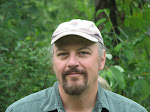Originally appeared in Boston
Baseball, August 2018
This is the way it was.
When I was little –four or five years old – our spare, bare
backyard in Ohio was pancake flat and empty.
My dad would pitch a Wiffle ball, I would hit. If it reached the big
pile of dirt at the back edge of the yard, leftover from some garden project,
well, that was a home run, and so were a lot of other lesser hits as I ran the
bases, slipping on vinyl-covered foam bases that didn’t last a summer.
One spring that changed.
My dad planted three silver maples in the backyard, twiggy little slips
only a few feet high, held in place and marked by a stake to make sure he
didn’t mow them down and I didn’t snap them off at the ground running through
the yard.
They grew quickly and in a year or two were sapling height,
as big around as my then-thin wrist. And over a summer… they gained names. The tree at the side of the yard, almost at
the edge of the property, became first base.
The tree in the middle became second base and the last tree, not nearly
as far away as first base to leave room for the clothesline, became third. And suddenly the back yard was a ballpark,
the always worn spot in front of the steps a muddy or dusty home plate.
As the trees grew, the branches served as outfielders,
snagging flies and knocking down line drives, at least until the limbs of
second and third began to touch and merge with each other, meaning that if I
pulled the ball, I was either out or the ball was lost, caught in some crook
that left me crying.
Ah, but right field.
Right field was free, wide open, first and second so far apart they
would never touch. By the time I hit Little League I was already an opposite
field hitter, my swing hard-wired to shoot the gap, a place with no shade.
 I got bigger, stronger and older, and a kid moved in two
doors down who loved baseball almost as much as I did. We started pitching to
each other and the field shrank. We
stopped using Wiffle bats to save our swings and switched to wood bats, wrapping
the ball with electricians tape to mend the inevitable cracks.
I got bigger, stronger and older, and a kid moved in two
doors down who loved baseball almost as much as I did. We started pitching to
each other and the field shrank. We
stopped using Wiffle bats to save our swings and switched to wood bats, wrapping
the ball with electricians tape to mend the inevitable cracks.
Then one day we flipped the field. First base became home, second became first,
third base second, and that bare spot by the steps third. But we grew bored with running – we wanted to
hit – and recruited ghost men as baserunners.
The rules evolved. If
we caught a fly or fielded a ground ball clean before it made it past the
greener grass that marked the leach field, that was an out. But if it found the ground or stopped in the
grass past a line that stretched from first to third, it was a single. Past second was a double, past the
clothesline a triple, and over the clothesline, Hosannah! A home run!
Hanging from one end, near the house in left, a bucket full
of clothespins, and a shot at immortality: an automatic grand slam.
But now right field was closed off by the tangle of branches.
The real game now lived in left field, the house a not so much a Green Monster
but white vinyl sided one, with an asphalt shingled roof. Line drives could smack off the wall like
Fenway, but if the ball landed on our roof, it rolled and gave the pitcher a
chance.
After landing on the roof it would bounce and roll and we’d
run under the eaves, Yaz-like, guessing where the ball might drop down, blind to the
ball to where it would fall. It was as
if a ball hit over the Monster could bounce back and still be in play. In our left
field potential doubles, triples even potential home runs all had to find the
ground to count, disasters saved by diving snags. On our field, if Bucky Dent’s
home run wouldn’t have made it over the crest of the roof, it could have rolled
back and been caught for an out. F-7.
And that bucket of clothespins? I hit that target once, a grand slam walk
off. Game over. My friend Chris,
pitching to me, turned around and walked across the yard to his house without a
word, Ralph Branca to my Bobby Thomson. I can see it still.
But Chris is gone now, long dead, buried in his uniform, and this spring we finally
sold the old house. In think those trees have either been cut down or trimmed
now, memories lost in splinters and sawdust, I guess. I’m not quite sure.
I can’t go back, not yet. But I can go on. Next week my old
friend Anthony and his wife Raquel are visiting with their son, Louie, five
years old and all about baseball.
I got the bat and brand new Wiffle ball already. Time to
make another backyard into a ballfield.
Glenn Stout’s next
book, with Richard Johnson, is The Pats: An Illustrated History of the New
England Patriots, available in November.
For more see glennstout.net.

